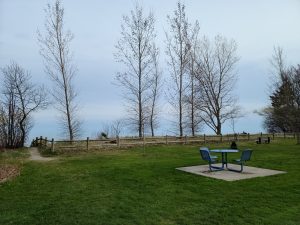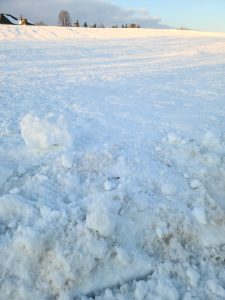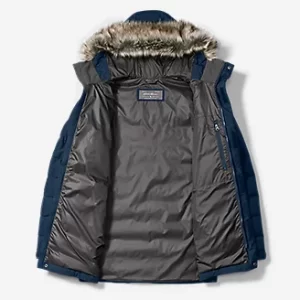Canada experiences a wide range of weather patterns throughout the year, from extreme cold in the winter to hot summers and varied conditions in between. This report aims to provide you with a comprehensive overview of Canadian weather and offer guidance on dressing appropriately for different seasons and climates across the country.
Canadian Weather Patterns
Canada has a very diverse weather system – it can go up to +40C (with humidity) in the summer and in some places can go as low as -40C in the winter.


Depending where you live, the seasons’ intensity can vary. For example, winters in most parts can be very harsh, and can drop to up to -30. While the temperature can measure, for example, -15, it can drop to minus 30 with the wind chill. As well, cold temperatures can turn snow into ice, so appropriate shoes are important.
a) Winter (December to March): In many parts of Canada, winter is characterized by extremely cold temperatures, heavy snowfall, and icy conditions. The northern regions experience prolonged periods of darkness, while the southern regions may have milder winters. For example, with the summer time zone (called Daylight Savings), the sun may rise as early as 4.30 am and you will see light until 9 pm. In Winters, it might be dark even at 7 am and by 4 pm darkness will fall again.
b) Spring (March to June): Spring brings milder temperatures, but it can still be chilly, especially in the early months. It is a transitional season with fluctuating weather, including rain showers, melting snow, and occasional frost.
c) Summer (June to September): Summers in Canada can vary from hot and humid in the southern regions to milder and more temperate in the northern parts. Thunderstorms, heatwaves, and periods of intense humidity are common during this season.
d) Autumn (Fall – September to December): Fall is characterized by cooler temperatures and changing foliage colors. Weather can be unpredictable, ranging from mild and pleasant to chilly and rainy.
Regional Variations
It is important to note that Canada is a vast country with diverse climates across its regions. Here are some key regional weather characteristics:
a) Western Canada (British Columbia, Alberta): The west coast experiences milder winters and cooler summers with higher levels of precipitation, especially in coastal areas. The interior regions of Alberta and British Columbia have colder winters and hotter, drier summers.
b) Central Canada (Ontario, Quebec): Central regions have distinct seasons with hot summers and cold winters. Summers can be humid, while winters are characterized by heavy snowfall and freezing temperatures.
c) Atlantic Canada (Nova Scotia, New Brunswick, Prince Edward Island, Newfoundland and Labrador): The Atlantic provinces have mild summers and cold winters with significant snowfall. The coastal regions are prone to heavy rain and fog.
d) Northern Canada (Yukon, Northwest Territories, Nunavut): Northern regions have long, cold winters with minimal daylight. Summers are short, but temperatures can be pleasant, ranging from cool to warm.
Dressing Appropriately for Canadian Weather
a) Winter





Layering is crucial.
Layering means wearing multiple layers of cloths. For example, a t-shirt/an insulated base layer, a sweater and a jacket will be multi-layered dress.
When you are inside a mall, for example, you can remove the outer layer if it is too hot. Start with a moisture-wicking base layer, add a warm insulating layer, and top it off with a waterproof and wind-resistant outer layer.
Consider wearing thermal leggings or long underwear under your pants for extra warmth.
Invest in a quality winter coat, preferably insulated with down or synthetic materials.
Wear thermal or woolen socks, waterproof boots, and insulated gloves or mittens.
Protect your head and neck with a hat and a scarf or neck warmer.
b) Spring and Fall:
Dress in layers to accommodate changing temperatures. Opt for a light jacket or sweater that can be easily removed if it gets warmer.
Carry an umbrella or a waterproof jacket in case of rain showers.
Wear comfortable shoes suitable for wet or muddy conditions.
c) Summer:
Choose lightweight and breathable clothing made from natural fibers like cotton or linen to stay cool.
Wear sunscreen, sunglasses, and a hat to protect yourself from the sun’s harmful rays.
Opt for comfortable footwear like sandals or sneakers for outdoor activities.
Creams Etc.
Don’t forget to apply moisturizer, lip balms etc. to protect your skin, particularly in winter.
Additional Tips:
Check the weather forecast regularly to stay informed about the upcoming conditions.
Pay attention to regional weather advisories and warnings, especially during extreme weather events.
Keep an emergency kit in your home and vehicle, including extra warm clothing, blankets, and necessary supplies in case of unexpected weather-related situations.
Buying Cloths
If you are arriving during the colder three seasons, arrive appropriately dressed so that you will feel comfortable at least during the first few weeks when you can purchase fresh clothing.
Generally, the stores pack clothing for a season starting from the latter parts of the previous season up to the middle part of that season. For example, you will get winter clothing starting from late stages of fall/autumn up to the middle part of the winter, sometimes even later part of the winter.

Also, there are thrift/second-hand stores where one can buy good quality cloths irrespective of the season. As well, there will be local Facebook and other groups where one could find cheaper or even free clothing in good condition.
